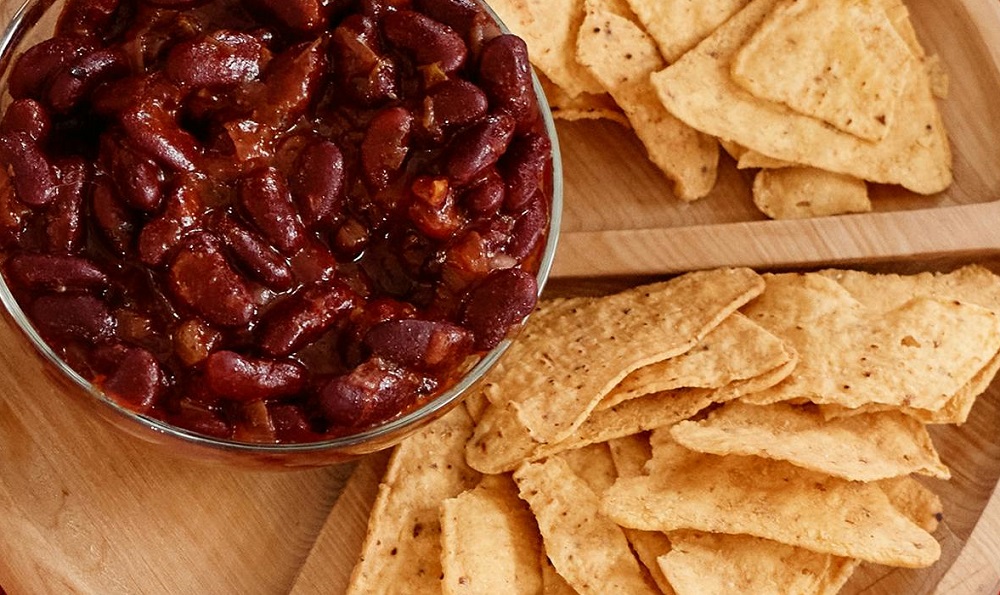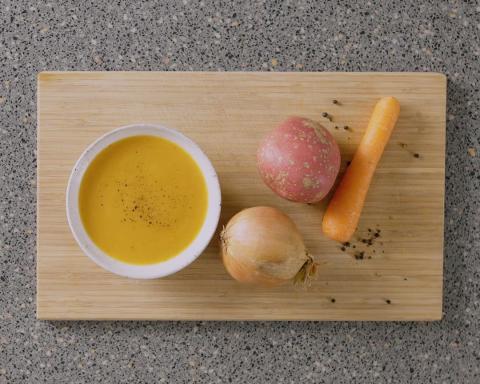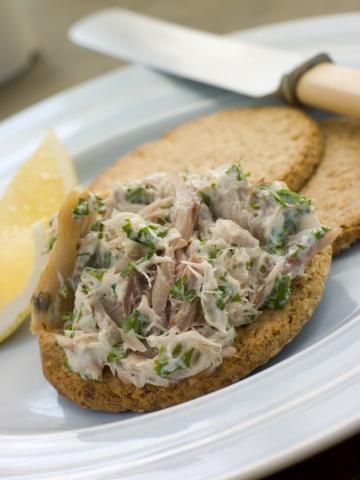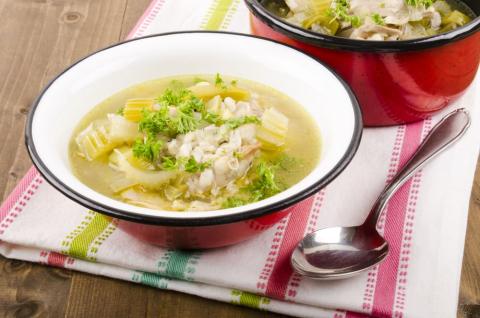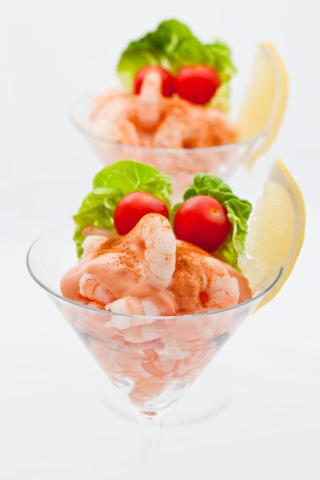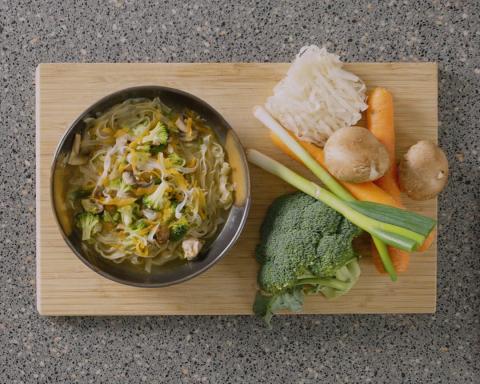- ½ Tin (200g) Refried Beans
- 1 (Squeeze a Fresh Lime) Teaspoon (5g) Lime Juice
- (1/2 Jar) (150g) Mild Salsa
- 6 Tablespoons (60g) Grated Cheese (Reduced Fat)
- 1 (Small) (100g) Avocado
- ½ Bag (90g) Tortilla Chips
Ingredients
Allergy Disclaimer
Always check the label of each ingredient for allergy warnings.
Method
- In a microwaveable bowl mix together the beans, lime juice and 1 tablespoon of the salsa. Grate cheese onto the top.
- Microwave on highest setting until the cheese is melted (30-40 seconds).
- Place the tip of a sharp knife into the avocado until it touches the stone, then gradually cut it in half keeping the knife against the stone. It should then pull apart and the stone can be removed. Using a dessert or table spoon remove the flesh by easing the spoon between the flesh and the skin. Once the flesh has been removed dice and place avocado on top of the grated cheese.
- Add the remaining salsa to the bowl and serve with tortilla chips.
Tips for Kids
Let them help to dice the avocado.
Nutritional Information
Based on a single serving of 151g (% of an adult's reference intake)
Energy
276 kcals ( 14 %)
1,161 kJ ( 14 %)
Fat
3.8 g ( 19 %)
Saturates
24.5 g ( %)
Sugar
1.8 g ( 2 %)
Salt
1.4 g ( 23 %)
Detailed nutritional information
| Per 100g | Per 151g serving | |
|---|---|---|
| Energy Kcals | 183 | 276 |
| Energy Kj | 769 | 1,161 |
| Protein | 6.3 g | 9.5 g |
| Total Fat | g | g |
| Saturated Fat | 2.5 g | 3.8 g |
| Carbohydrates | 16.2 g | 24.5 g |
| Total Sugars | 1.2 g | 1.8 g |
| NSP Fibre | 1.8 g | 2.7 g |
| Sodium | 363 mg | 548 mg |
| Salt | 0.9 g | 1.4 g |
Find out about nutritional labelling
Nutrition labels on the front of packaging
- Most of the big supermarkets and many food manufacturers display nutritional information on the front of pre-packed food.
- Front of pack nutrition labels provide information on the number of grams of fat, saturated fat, sugars and salt and the amount of energy (in kJ and kcal) in a serving or portion of a recipe.
- The labels also include information about reference intakes (expressed as a percentage) which are guidelines about the approximate amount of particular nutrients and energy required for a healthy diet.
- The colour coding tells you at a glance if the food has high (red), medium (amber) or low (green) amounts of fat, saturated fat, sugars and salt.
- The more greens on the label, the healthier the choice
- Amber means neither high nor low, so you can eat foods with all or mostly ambers on the label most of the time.
- Reds on the label means the food is high in that nutrient and these are the foods we should cut down on. Try to eat these foods less often and in small amounts.
Food shopping tips
If you’re trying to decide which product to choose, check to see if there's a nutrition label on the front of the pack. This will help you to quickly assess how your choices stack up. You will often find a mixture of red, amber and green colour coding for the nutrients. So when you're choosing between similar products, try to go for more greens and ambers and fewer reds if you want to make a healthier choice.
 Activities & Play
Activities & Play Behaviour
Behaviour Childcare
Childcare Development & Growing Up
Development & Growing Up Family, Friends & Relationships
Family, Friends & Relationships Feeding Your Baby
Feeding Your Baby Food & Eating
Food & Eating Health & Safety
Health & Safety Mental Health & Wellbeing
Mental Health & Wellbeing Money & Work
Money & Work Online Behaviour & Safety
Online Behaviour & Safety Pregnancy & First Days
Pregnancy & First Days School & Education
School & Education Sleep
Sleep

